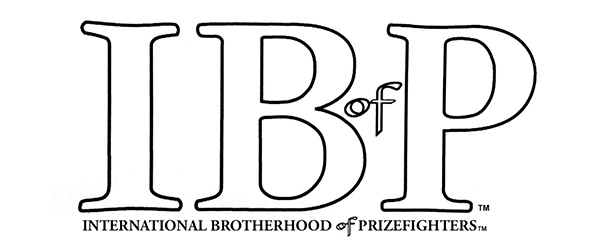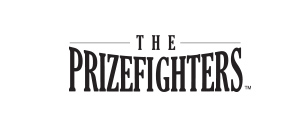Canada and USA
The 50 Greatest Featherweights of all Time Part Five: 10-1

GREATEST FEATHERWEIGHTS, PART V: It is possible that the Top Five listed below is the single finest collection of fighters I have assembled in running down the Top Fifties in six of the eight classic weight divisions. As a ten, it may not measure up to Middleweight and Lightweight, but as a five, the Featherweights are right there with the very best.
Happily, these five all but picked themselves with only #6 at any time during the editing process listed amongst the five greatest; even better, the #1 was a natural choice, perhaps for the first time since Heavyweight. In fact, once the arguments about #10 v #11 and #2 v #3 had calmed down, this final entry in the Featherweight series pretty much wrote itself.
After the agonies of Part Two and Part Four, this was a very welcome change.
So listen.
This is how I have them:
10 – Alexis Arguello (77-8)
We open The Ten with a professional’s professional, a puncher of wonderful accuracy and power who matched brutality with elegance and elegance with destruction.
Arguello introduced himself to world-class boxing in the traditional manner, with a decimation of a former linchpin; scheduled for ten rounds with Jose Legra, he cracked him out in one, turning heads from Nicaragua, where they already knew him to be special, to Inglewood, where he would soon be crash-landing. He did run afoul of the elegant Ernesto Marcel in 1974, dropping a decision while underweight at 122lbs, but at 126, he would be near invincible.
Art Hafey, ranked the #5 featherweight in the world, was the fighter unlucky enough to cross Arguello’s path in an elimination bout later that year; the Nicaraguan steamrolled him in five. His next major challenge was major indeed: Ruben Olivares. What this fight underlined was Arguello’s size at featherweight. Olivares was a natural bantamweight so for him the sight of the 5’10 Arguello, must have been a particularly distressing one, but even for natural feathers he was intimidating. Not that you would have known it in the Inglewood Forum that night as Olivares rattled Arguello to his bones on numerous occasions before succumbing to a devastating left hook that appeared to travel around an inch. Olivares regained his feet and fought on like a man possessed but Arguello exorcised him with another, equally merciless punch.
He showed the division as a whole no mercy, gunning out Leonel Hernandez in eight and, in perhaps in his most impressive featherweight performance, Royal Kobayashi in five. He then departed the division the undefeated champion of the world; one can only imagine the collective sigh of relief that was expelled in his wake.
Other Top Fifty Featherweights Defeated: None.
09 – Eusebio Pedroza (41-6-1)
Eusebio Pedroza, out of Panama City, was at once an elegant, skillful boxer and an aggressive, rough-house mauler, the kind of offshoot you might get if you tried to splice Willie Pep with Sandy Saddler.
Perhaps the most complete featherweight on this list, Pedroza’s career is, by contrast incomplete. Pedroza lifted the WBA title in 1978; Salvador Sanchez reigned as the WBC and lineal champion. The WBA and WBC refused to let their champions face one another; in other words, the governing bodies who are supposed to regulate boxing’s betterment denied us the chance of seeing Sanchez-Pedroza, certainly the greatest featherweight fight never to be made, furthermore denying Pedroza the chance to fight for the lineal title and to meet the only man in the world who could contest his dominance. “Worse than useless” is the phrase you are looking for.
When Sanchez tragically passed it was Pedroza who picked up the pieces, lifting the lineal title in 1983. He managed just four defenses of this, the legitimate title.
His standing among the ten greatest featherweights is, nevertheless, guaranteed. Although he failed to match the very best in the world often enough to appear in the top five, he knocked off numerous contenders, as famous for his otherworldly stamina as for his viciousness, two attributes partly responsible for victories over the likes of Jose Caba, Rocky Lockridge, Pat Ford, Ruben Olivares, Hector Carrasquilla and Cecilio Lastra. Very much the scourge of the division upon the passing of Sanchez, if he was occasionally drawn into close and even controversial wars that ended in narrow decisions in his favor he was more often dominant and deadly.
Sanchez may have sealed his legacy. We will never now, thanks to the absurd machinations of the alphabet bandits.
Other Top Fifty Featherweights Defeated: None.
08 – Johnny Kilbane (49-5-7, Newspaper Decisions 61-11-8)
Johnny Kilbane’s title run was enormous, spanning 1912 to 1923 when Eugene Criqui savaged the old man with a body attack before stopping him with a right to the jaw in six.
Fade back a decade and we see Kilbane pulling a similar trick against champion Abe Attell. Then, Attell was the fighter with the miles on him, then, Kilbane was the hungry lion. An underdog, he made the fight, pushing the champion and reacting to his litany of fouls with patience and skill. He outfought Attell in the clinches and out-boxed him with the long left when Attell tried to pressure him. It was a masterful performance and one worthy of crowning a new champion.
Now things get a little odd. Kilbane was the champion, it’s true, and no other claims are now recognized, but in the next eleven years, Kilbane staged just four successful defenses – and won just two of them.
He met Jimmy Walsh for the title three months after defeating Attell and the two boxed a draw. The following year he staged a defense against Johnny Dundee. The result, again, was a draw. For the next featherweight title fight, the public had to wait three years, although Kilbane’s performance against feared puncher George “KO” Chaney was stunning; Chaney was on 25 fight unbeaten run, Kilbane dusted him in just three rounds. The king then took an astonishing five years off from the championship ring before returning to defeat Danny Frush by knockout in the seventh.
It’s odd, but as always, it must be properly understood. While Kilbane was not fighting in announced, promoted title fights, he was fighting, and for the most part at quite the lick and against good competition. He met Dundee for the title in 1913, and managed only a draw – but he defeated Dundee in a non-title fight four months after defeating Walsh. More, Kilbane boxed in an era where any knockout loss might be considered a passing of the torch.
Complicating matters further, Kilbane boxed in many no-contests, where newspaper men rendered an unofficial decision if no stoppage occurred. So what we have here is a situation where Kilbane boxed four successful title defenses but, also, in a sense, boxed dozens of them, all while finding time to step up and beat lightweights like Benny Leonard and Freddie Welsh.
Kilbane was like a name gunslinger, everyone wanted a piece of him. He dealt with that by winning, winning, winning and although his featherweight legacy is something of a hotchpotch as a result of the culture of his era, his lengthy title reign holds considerable weight.
Other Top Fifty Featherweights Defeated: Johnny Dundee (20), Abe Attell (Top Ten)
07 – Freddie Miller (184-29-5; Newspaper Decisions 25-2-2)
I always feel that a man who amasses one hundred career victories is especially to be admired as a winner. Training as near to the quill as he can before coming up to scratch and outfighting one hundred men trained to beat you is a sure testimony to an indomitable will.
Freddie Miller has two-hundred career victories, and the overwhelming majority were at featherweight.
Every time I compose one of these lists I run across at least one fighter who is, inexplicably, bereft of credit, but it is rare to see one make the top ten. Miller warrants an honorable mention for the IBRO’s top twenty at the weight, but even the great fight-man Charley Rose, not noted for his shyness in favoring the old-timers, neglects to place Miller in his ten. For me, he is a lock.
Miller assassinated the featherweight division of the 1930s. No fighter ranked at the summit for longer during that decade than Miller, not Kid Chocolate, not Battling Battalino, not Henry Armstrong. In that time, he defeated a cacophony of fighters ranked in the divisional top five, including Tommy Paul, Eddie Shea, Frankie Wallace, Baby Arizmendi, Nel Tarleton and Young Rightmire. Of those ranked from 6-10, he took Lew Feldman, Rodolfo Casanova, Petey Sarron, Vernon Cormier and Maurice Holtzer. Other significant scalps included Abie Israel, Panama Al Brown and Chalky Wright.
Some of these names will be familiar, either because they appear in discussions elsewhere for the top fifty, they rank among the top fifty, or for other fine reasons, including their pre-eminence in the division at the time.
Miller’s status as lineal champion, it is true, is subject to debate. For Ring Magazine, he was just that, for others, his claim is debatable. Wherever you stand on that issue, consider that Miller went undefeated in title fights between 1932 and 1935, a total of fourteen contests which took him to Britain, Spain and every corner of the United States.
When he was finally defeated by Petey Sarron by majority decision in 1936, his credentials as a great featherweight had surely been proven beyond doubt. Perhaps Miller’s limitations as a puncher explain the lack of respect his fantastical exploits deserve, but as a ring general he may be without parallel at the poundage; regardless, he was a fighter who excelled at the one thing all the greats specialized in: winning.
Other Top Fifty Featherweights Defeated: Baby Arizmendi (32), Chalky Wright (30), Battling Battalino (ND, 2).
06 – Salvador Sanchez (44-1-1)
When Salvador Sanchez met Danny Lopez in 1980, he was not particularly well known, nor had he done much to build a reputation that would have made him well known, despite his riding a thirteen fight winning streak. His opposition, though perhaps not quite soft, had been questionable and he had yet to win a fight over a distance longer than ten rounds.
Nor was there great surprise when Sanchez made the early running against Lopez – after all, almost everyone did. What surprised was that, come the championship rounds, he was still battering Lopez around the ring, a superb defense barracked by an excellent chin allowing him to throw concise, compact punches without fear of reprisals. Happily standing toe-to-toe with the champion, Sanchez stopped Lopez in the thirteenth round, hammering him into submission like so much of the limited competition he feasted on throughout the early part of his career.
As the 1980s dawned, so did the title reign of Sal Sanchez, and it was to be a brilliant one. His first defense was perhaps his toughest, against the #2 contender Ruben Castillo. Castillo and Sanchez were almost identical physically, the same age, the same height and of course the same weight; the only significant difference was Sanchez’s advantage in reach. Castillo was then unbeaten outside of a knockout loss to Alexis Arguello, in which he had gathered invaluable experience against a rangier fighter; he applied this against Sanchez, feinting and circling to draw Sanchez across him before throwing the left. It’s beautiful to watch and brought Castillo many of the early rounds; Sanchez made a wonderful adjustment, introducing a shepherding jab and patiently holding his line while applying pressure. Nevertheless, I didn’t see Sanchez ahead until the eleventh in what is my favorite of his performances; in the championship rounds, he assumed control, winning three of the last four.
In his second defense he stopped Danny Lopez for a second time and then matched the huge Ghanaian Pat Ford, a giant of a featherweight who towered over Sanchez. To say the Mexican was troubled in this fight is an understatement and he needed his customary late rally to pull out the decision, winning twelve through fifteen on my card against a game, awkward opponent.
This fight confirmed Sanchez over the distance. He proved it over and again in what were glory days for the featherweight title. He scored a dominant fifteen round decision over the excellent Juan Laporte, ranked #3, stopped #6 Roberto Castanon in ten, crushed the legendary Wilfredo Gomez in eight, staging two more defenses before his legendary contest with Azumah Nelson, a fifteenth round knockout over an opponent he had perhaps taken a little lightly.
Sanchez was repeatedly troubled through this glorious title run which makes me wonder about his future had he not been tragically killed in a car crash in 1982. He had the generalship, stamina, jaw and punch selection to trouble just about anyone but that slow start he was often guilty of may have hurt him against a fighter like Pedroza, or some lesser contender.
But maybe, just maybe, his ability to think on his feet, to adjust across the ring, would have bought his way out of trouble against all of them. Had he caught a cab instead of getting behind the wheel that day, and had he abandoned his plans to retire young, he might have had talent enough to stage an assault upon the top three here; perhaps even the top one.
Other Top Fifty Featherweights Defeated: Azumah Nelson (25), Danny Lopez (19).
05 – Abe Attell (72-9-16; Newspaper Decisions 39-9-6)
Abe Attell was spiteful, ruthless and a natural born champion. He ruled the featherweight division for almost a decade before Kilbane came to the throne, meaning that between them, the two spent most of the first quarter of the twentieth century atop the pile. Attell rates above Kilbane due to their different approaches to defending championship honors. Kilbane fought four successful advertised defenses, Attell staged more than twenty. He was a monstrous champion who left a colossal psychic scar on the division’s history.
But my treatment of Attell’s reign is different to that which is normally held. The key fight is his 1904 defense against Brooklyn’s tough Tommy Sullivan, lost by way of a controversial fifth round knockout. The knockout punch – for Attell was knocked out – was a left uppercut, driven to the beltline with such force it was said to have lifted him from the canvas and reintroduced him to it face first; Abe claimed to have been fouled. The referee called a doctor to the ring and he examined the brutalized party; in fact, three physicians in all examined Attell while he writhed in apparent agony in full view of an agitated crowd and none found any evidence of his being fouled, at which point Sullivan was named the winner.
Attell, however, completely ignored the judgment of the referee and continued to defend “his” featherweight title just as if the loss had never occurred. Such were the vagaries of title politics in “the good old days” that his claim was generally acknowledged. Meanwhile, BoxRec lists no title defenses of the title by Sullivan, although the timeline was restored when Sullivan was defeated by the mysterious Hugh McPadden, who then retired, allowing Attell to pick the title up once more by beating Jimmy Walsh in 1906.
Even this treatment, which sees Attell credited with two shorter title runs rather than the longer one he is generally accounted with, renders Attell’s raw statistics stunning. No featherweight managed more lineal defenses, even if he was a little too keen on no-decision bouts for the taste of some.
His decision to sit on the title rather than defend it between 1909 and 1912 was also unfortunate but in the end few champions at any weight measure up.
As an all-time divisional number five, he may be without peer.
Other Top Fifty Featherweights Defeated: Owen Moran (26), Johnny Kilbane (Top Ten), George Dixon (Top Ten).
04 – George Dixon (67-29-51; Newspaper Decisions 6-2-4)
“By his pluck and integrity,” wrote the St.Louis Republic in the early 1900s, “[George Dixon] has done more to gain consideration for dark-skinned men than ever Frederick Douglas did.”
The article from which this quote is drawn is spotted with the kind of casual racism that marred much of the era’s press, and, of course, the statement itself is more than debatable. But it is instructive. Everyone admired Dixon, for his heart and for his skill. By ’01 Dixon was losing far more than he was winning, broken down and fighting men who would not have made worthwhile sparring partners during his incredible pomp, but still the white press continued to exalt him. His wonderful skills vanished with the old century, but the final decade of that century had belonged to him, perhaps more than to any other pugilist in the world.
During that time, Dixon went 16-2-1 in featherweight title fights.
Even these two losses are mitigated by the fact that he defeated both of the men who beat him. After the great lightweight champion Frank Erne bested him in 1896, Dixon agreed to face him in a rematch in New York despite the fact that Erne came in eight pounds above the limit. Facing a great fighter who had previously scored a victory against him and now suffering a weight disadvantage, it should be obvious that Dixon was the underdog ringside, but he was a thinking fighter. Dixon parked his two best punches, a steaming left to the body and a right hand aimed at the jaw and instead stood straight, neither swarming nor crouching, and invited the bigger man onto him, casually picking him off as he was attacked. Erne came on in the final rounds of the twenty-five, but by then Dixon had left him eating dust.
The other man to defeat Dixon was Solly Smith who took his title in 1897. Previously, Dixon had stopped Smith in seven and so he pursued a rematch. Dave Sullivan, a slick, quick Irishman beat him to the shot and when Smith broke his arm (he never properly recovered) in his match with Sullivan, Dixon swept in for the title shot. Sullivan was trapped on the end of Dixon’s jab early, but was boxing well by the tenth when he walked onto a Dixon uppercut, quite possibly the victim of one of “Little Chocolate’s” little traps; corner interference saw the championship returned to its rightful owner.
That was 1897. He would hold it in multiple defenses until the monster Terry McGovern came calling in 1900. The featherweight who could fend off that stick of dynamite when past-prime has not yet been born; Dixon fell in eight.
Before that, in spells, he seemed invincible. Today, Dixon seems to enjoy a reputation based primarily upon technical excellence and defense, and certainly he excelled in these areas; he was also, however, a little war-machine, aggressive, direct, armed with good punching power and, in his prime, near limitless stamina.
He wound down his career in a disaster of losses and draws, scrabbling for chump change, but, as we have seen, even then he was respected as perhaps the greatest exponent of pugilism the world had then seen.
Other Top Fifty Featherweights Defeated: Solly Smith (43).
03 – Vicente Saldivar (37-3)
As I’ve written before, the term “cleared out the weight division” is perhaps the most abused in boxing. This is because it almost never happens; there’s always someone out there.
That being said, Vicente Saldivar perhaps came as close as any man to achieving the mythical clearout; he roared through the featherweight division of the 1960s with few left behind to tell the tale of his passing unscathed.
The road to the world title was opened up in a fascinating contest between future greats as he was matched with the soon-to-be lightweight champion Ismael Laguna. That fight was not without its controversies and there were some in attendance who believed Laguna was good for the nod. Highlights of that contest can be found on the McGrain boxing channel on YouTube; what is available shows a close contest but certainly not one that would lend itself to serious objections. Whatever the detail, Saldivar got the nod and in his next contest he met with Sugar Ramos for the featherweight crown.
Ramos, a 2-1 favorite, was cloaked in an unfortunate aura of danger since he took the life of Davey Moore in claiming the title, and he oozed confidence as he entered the bull-ring that held the fight-ring where he was to make his fourth defense. Early, he had success with a long jab to the body, and some rushing, wild hooks. Saldivar, poisonous, squat, compact, studied Ramos in turn and as the fight progressed, he began to find him. Saldivar had learned this wonderful habit, but when he found a fighter it tended to be all at once. Suddenly Saldivar, who had been trying to open up his victim with a jab, a one-two, a sometime body-attack, could suddenly be found throwing eight punch combinations. How the fight might progress would, in the main, be decided by how the opponent dealt with such terror and Ramos did not deal with it well. Through the tenth and eleventh rounds, Saldivar achieved rare heights, even for a championship ring, finding seamless squads of punches thrown in neat, compact bunches, all the while, dipping and sliding the increasingly desperate winging blows coming his way in return. These two rounds – and the sick punishment that preceded it – may have been the absolute peak of Saldivar’s career, but we have plenty to choose from. When Ramos failed to answer the bell for the twelfth, a new and violent era was begun.
Raul Rojas, the world’s #2 contender, was thrashed and stopped in fifteen; the gutsy Howard Winstone, also a top contender, was crushed twice on his home soil and once in Mexico; Floyd Robertson, who had been involved in a rather bizarre fifteen round split decision loss to Sugar Ramos, was blasted out in two; the #1 contender Mitsunori Seki was outpointed, rematched for the temerity he showed in going the distance, then slaughtered in seven.
Saldivar retired after the third Winstone fight, but returned and after being dropped for a count in the third, battered the new #1 contender, Jose Legra, with a body attack before restoring himself to title honors with a victory over Johnny Famechon.
Saldivar was an insidious force of nature, someone who built his fight-plan from the bottom and delivered the knockout when he was ready and not before. As for the possibility of his being out-pointed, he was a brilliant technician with superb speed and a patience matched only by that of Salvador Sanchez. Age caught up to him in the form of the inexhaustible Kuniaki Shibata but by that point two stints as world champion and a record of 9-0 in featherweight title fights against excellent competition had already guaranteed his immortality.
Other Top Fifty Featherweights Defeated: Jose Legra (50), Johnny Famechon (38), Howard Winstone (37), Sugar Ramos (18).
02 – Sandy Saddler (145-16-2)
Beast.
Sandy Saddler was the most brutal featherweight in the division’s history, a stylist who fought with a puncher’s hate, a man of absurd dimensions who fought in the crouch of a sawn-off swarmer, a contradiction on skinny legs that used any and every trick in the book to bend his withering opponents to his will.
And yet, the secondary elements of his featherweight legacy are unsatisfying. In part, this is due to his pound-for-pound excellence which saw him spend two years defending the lightly regarded 130lb title, a weight-limit that probably suited his 5’8 frame a little better than 126lbs; but it is also true that he failed to find an extensive list of impressive names to batter in the same way that Saldivar or Miller did. He caught a close decision victory against #4 contender Charley Riley towards the end of 1950, battered Ray Famechon into submission in five rounds four years later, posted a successful title defense against the underrated Teddy Davis in a foul-filled affair the year after and posted a final defense against Flash Elorde, who had beaten him in ’55 but was stopped on a cut with the title on the line. Saddler tended to find a way with the title on the line.
Nevertheless, here he stands, on merit, at #2, and what holds him here is one thing: his three vicious dominations of Willie Pep.
Between 1940 and 1951 only one featherweight was able to best Pep, and that featherweight was Saddler. Their first fight, from 1948, saw Pep made a strong favorite and with good reason – he was as brilliant and dominant a champion as had ever lived – but there were reasons to favor Saddler. For two years he had been trailing Pep and was eerily confident of his chances. This confidence was borne out. He found the champion with ease, busting him up, cutting him, and stopping him in four with a brutal left hook. After losing a rematch Saddler auditioned with hate for his rematch, winning twenty-three in a row, eighteen of them by stoppage. In 1950, they met once more.
“He got me in a double arm-lock,” sulked Pep after his ninth round quittage, apparently suffering from a damaged shoulder.
“Body punches,” was Saddler’s riposte. “I could see in his eyes something was wrong but I didn’t think it was no shoulder.
Whether by way of brutality in the clinch or brutality in the body attack, Saddler had carried the day. A fourth meeting was inevitable; it was also a farce. Saddler was slipping by this time and he met Pep between losses to Tony DeMarco. The fight ran badly out of control, as savage a foul-fest as has ever been seen in a New York ring. No featherweight, alive or dead, could win such a contest against Saddler.
Saddler’s overall offense, the knotted branch of his summary attack, was too much for Pep. He always found a crack in that genius defense for one form of torture or another. Pep, basically unbeatable at the weight according to all other evidence, bowed three times to Saddler. The first of these is perhaps the greatest win in the history of the division.
Other Top Fifty Featherweights Defeated: Willie Pep (Top Ten).
01 – Willie Pep (229-11-1)
The toughest thing, in my opinion, in picking apart boxing history is ungluing the stardust that holds it together. The men who perpetuated the myths and legends that make the bygone days of boxing the most marveled at in sports were all friends to the fight game, but sometimes they did more harm than good. Pick your favorite boxing story pre-1960 and set off to find out where it comes from. Often, it is not easy.
My fear, and in a small way, my expectation, was that I might not like what I would find in digging into the details of Willie Pep’s legacy. I expected, if I am honest, to find shortcomings that I was unaware of before the work began, that perhaps the de facto number one for a thousand featherweight lists would come up short when placed under the microscope, that perhaps, even, Sandy Saddler, who after all defeated him three times, might be the unfashionable choice I would have to explain.
But none of this is true. Willie Pep is the greatest featherweight who ever lived. It is made true by his championship reigns, by his indefatigable spirit, by his brilliant stylings and even, to my great relief, by the depth of his stunning resume.
Here is a list of the made men that Willie Pep defeated:
Ray Famechon, Charley Riley, Eddie Compo, Sandy Saddler, Humberto Sierra, Jock Leslie, Jackie Graves, Sal Bartolo, Phil Terranova, Charles Lewis, Manuel Ortiz and Chalky Wright.
It is a longer list of ranked contenders or significant scalps taken than any of the other featherweights in the Top Fifty by my measure.
But it was the manner in which he bested them that really sets him apart.
Willie Pep was not a technician in the strictest of terms because his style is not one that should ever be taught to prospective pugilists. That would be like asking a nine year old with good spatial awareness to equal the Mona Lisa. Rather, Pep was fundamentally sound, in that he rarely if ever overstretched his physical abilities during technical execution, the definition of fistic legitimacy.
The reality was perfection even if the technique was sometimes questionable. What I mean by this is that he did things that would be deemed imperfect in the strictest sense of technical excellence but those things yielded impossible results. It is not enough to say “he got away with it” – he re-defined “it” for his own ends, like all true mavericks.
Based primarily upon this disturbing mixture of sound and unsound footwork, which both removed him from and introduced him to punching range depending upon his needs, Pep worked to the tiniest of margins, perfect for inducing foolish risks in otherwise sound opponents, but failing to translate somewhat to the bigger divisions against fighters with longer reaches – Pep’s best was, inarguably, at featherweight.
He feinted with those feet, boxing high on his toes whether pivoting, coming in or coming out, coming down only when it was safe for him to do so. But Pep hacked boxing’s Matrix. It was safe for him to punch when mortal fighters had to cover up. Pep, more any other fighter, boxed in perfect harmony with his body, dancing to a tune nobody else could hear.
All this birthed perhaps the greatest hot-streak in boxing: 135-1-1, with neither draw nor loss coming at featherweight.
That other number, 1-3 against the best fighter he faced, Sandy Saddler, is a little disturbing and I understand the urge to want to stress the timing of Pep’s serious injuries in a plane crash to explain some of it away. The truth is, there is no need. Despite his record against Saddler, Willie Pep is far and away the greatest.
This was to my relief, nearly as great as the joy I feel when watching the precious rounds of film during which we can watch Pep box.
Other Top Fifty Featherweights Defeated: Sal Bartolo (45), Chalky Wright (30), Sandy Saddler (Top Ten).
To those that have taken the time to read this series of articles from first to last, I thank you.
Check out more boxing news on video at The Boxing Channel.
Argentina
The BWAA Shames Veteran Referee Laurence Cole and Two Nebraska Judges
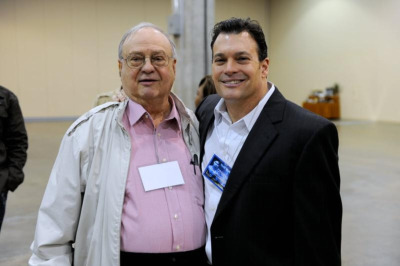
In an unprecedented development, the Boxing Writers Association of America has started a “watch list” to lift the curtain on ring officials who have “screwed up.” Veteran Texas referee Laurence Cole and Nebraska judges Mike Contreras and Jeff Sinnett have the unwelcome distinction of being the first “honorees.”
“Boxing is a sport where judges and referees are rarely held accountable for poor performances that unfairly change the course of a fighter’s career and, in some instances, endanger lives,” says the BWAA in a preamble to the new feature. Hence the watch list, which is designed to “call attention to ‘egregious’ errors in scoring by judges and unacceptable conduct by referees.”
Contreras and Sinnett, residents of Omaha, were singled out for their scorecards in the match between lightweights Thomas Mattice and Zhora Hamazaryan, an eight round contest staged at the WinnaVegas Casino in Sloan, Iowa on July 20. They both scored the fight 76-75 for Mattice, enabling the Ohio fighter to keep his undefeated record intact via a split decision.
Although Mattice vs. Hamazaryan was a supporting bout, it aired live on ShoBox. Analyst Steve Farhood, who was been with ShoBox since the inception of the series in 2001, called it one of the worst decisions he had ever seen. Lead announcer Barry Tompkins went further, calling it the worst decision he has seen in his 40 years of covering the sport.
Laurence Cole (pictured alongside his father) was singled out for his behavior as the third man in the ring for the fight between Regis Prograis and Juan Jose Velasco at the Lakefront Arena in New Orleans on July 14. The bout was televised live on ESPN.
In his rationale for calling out Cole, BWAA prexy Joseph Santoliquito leaned heavily on Thomas Hauser’s critique of Cole’s performance in The Sweet Science. “Velasco fought courageously and as well as he could,” noted Hauser. “But at the end of round seven he was a thoroughly beaten fighter.”
His chief second bullied him into coming out for another round. Forty-five seconds into round eight, after being knocked down for a third time, Velasco spit out his mouthpiece and indicated to Cole that he was finished. But Cole insisted that the match continue and then, after another knockdown that he ruled a slip, let it continue for another 35 seconds before Velasco’s corner mercifully threw in the towel.
Controversy has dogged Laurence Cole for well over a decade.
Cole was the third man in the ring for the Nov. 25, 2006 bout in Hildalgo, Texas, between Juan Manuel Marquez and Jimrex Jaca. In the fifth round, Marquez sustained a cut on his forehead from an accidental head butt. In round eight, another accidental head butt widened and deepened the gash. As Marquez was being examined by the ring doctor, Cole informed Marquez that he was ahead on the scorecards, volunteering this information while holding his hand over his HBO wireless mike. The inference was that Marquez was free to quit right then without tarnishing his record. (Marquez elected to continue and stopped Jaca in the next round.)
This was improper. For this indiscretion, Cole was prohibited from working a significant fight in Texas for the next six months.
More recently, Cole worked the 2014 fight between Vasyl Lomachenko and Orlando Salido at the San Antonio Alamodome. During the fight, Salido made a mockery of the Queensberry rules for which he received no point deductions and only one warning. Cole’s performance, said Matt McGrain, was “astonishingly bad,” an opinion echoed by many other boxing writers. And one could site numerous other incidents where Cole’s performance came under scrutiny.
Laurence Cole is the son of Richard “Dickie” Cole. The elder Cole, now 87 years old, served 21 years as head of the Texas Department of Combat Sports Regulation before stepping down on April 30, 2014. At various times during his tenure, Dickie Cole held high executive posts with the World Boxing Council and North American Boxing Federation. He was the first and only inductee into the inaugural class of the Texas Boxing Hall of Fame, an organization founded by El Paso promoter Lester Bedford in 2015.
From an administrative standpoint, boxing in Texas during the reign of Dickie Cole was frequently described in terms befitting a banana republic. Whenever there was a big fight in the Lone Star State, his son was the favorite to draw the coveted refereeing assignment.
Boxing is a sideline for Laurence Cole who runs an independent insurance agency in Dallas. By law in Texas (and in most other states), a boxing promoter must purchase insurance to cover medical costs in the event that one or more of the fighters on his show is seriously injured. Cole’s agency is purportedly in the top two nationally in writing these policies. Make of that what you will.
Complaints of ineptitude, says the WBAA, will be evaluated by a “rotating committee of select BWAA members and respected boxing experts.” In subsequent years, says the press release, the watch list will be published quarterly in the months of April, August, and December (must be the new math).
Check out more boxing news on video at The Boxing Channel
Canada and USA
The Avila Perspective, Chapter 8: Competing Cards in N.Y. and L.A.
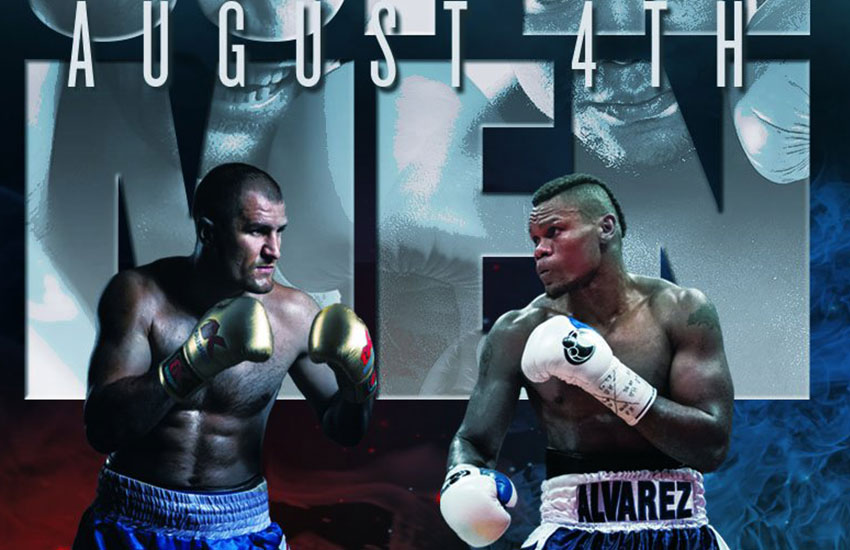
Rival boxing shows compete this Saturday as light heavyweight world titlists are featured in New Jersey while former world champion welterweights and middleweights tangle in New York.
A mere 150 miles separate the two fight cards staged in Uniondale, N.Y. and Atlantic City.
But there’s no mercy inside the boxing ring and certainly no mercy between boxing promotions. While Main Events stages WBO light heavyweight titlist Sergey Kovalev and WBA light heavyweight titlist Dmitry Bivol in separate bouts, DiBella Entertainment stacks former champs Andre Berto against Devon Alexander in a welterweight clash.
Take your pick.
Russia’s Kovalev (32-2-1, 28 KOs) has lost some luster and hopes to reboot his popularity with a win against Canada’s Eleider Alvarez (23-0, 11 KOs). But he will be directly competing against WBA champ Bivol (13-0, 11 KOs), also of Russia, who defends against Isaac Chilemba (25-5-2) of South Africa.
HBO will televise both light heavyweight title fights.
Bivol, 27, has slowly, almost glacier-like slow, picked up fans along the way by training in Southern California. The quiet unassuming fighter with a conservative style and cobra-like quickness appeals to the fans.
“I do not think that now I am the best light heavyweight, but I am now one of the best. One of four guys,” said Bivol during a press conference call. “But I hope in not the far future, we will know who is the best.”
That, of course, would mean a date with Kovalev should both fighters win on Saturday. Nothing is certain.
Kovalev, now 35, has lost some of that fear factor aura since losing back-to-back fights to now retired Andre Ward. Though he’s cracked two opponents in succession by knockout, many are pointing to the potential showdown with Bivol as the moment of truth.
“Most likely this fight is gonna happen since both Sergey and I are HBO boxers and as long as that’s what the people want, most likely the fight will happen,” said Bivol. “Me and Sergey will make sure to give this fight to the people.”
It’s time for the build-up and it starts on Saturday Aug. 4, on HBO.
“That’s certainly a goal of Sergey’s and he’s made it very clear to me that that’s what he wants to do,” said promoter Kathy Duva, CEO of Main Events. “He wants to do unification fights if he is successful with Eleider Alvarez. That’s what he wants to do next; he’s been very clear about that.”
DiBella
Five former world champions stack the fight card at Nassau Coliseum in Uniondale, New York.
Former welterweight world champs Andre Berto (31-5, 24 KOs) and Devon Alexander (27-4-1, 14 KOs) lead the charge in a 12-round clash. FOX will televise the main event and others at 4 p.m. PT/7 p.m. ET.
Berto, 34, has been fighting once a year so it’s difficult to determine if age has crept into his reflexes. When he knocked out Victor Ortiz in a rematch two years ago Berto looked sharp and dangerous. But against Shawn Porter a year ago, the crispness seemed gone and he quickly lost by knockout.
Alexander, 31, has the advantage of being a southpaw. But he always seems to do the minimum when he fights. Last February he slowed down and allowed Victor Ortiz to steal the fight. All the commotion by the announcers was for naught. Defense does not win fights, it allows you to win fights. The lack of offense in the latter rounds cost Alexander a win in a match that entered the books as a majority draw.
It’s a curious matchup of former world champions.
Peter “Kid Chocolate” Quillin (33-1-1, 23 KOs) the former WBO middleweight titlist meets J’Leon Love (24-1-1, 13 KOs) in a super middleweight bout set for 10 rounds. It’s another intriguing fight especially between two fighters with great personalities.
Quillin, 35, was ambushed by Daniel Jacobs in the first round a year ago in losing the title. Was it bad luck, age or both? As a fighter the Brooklyn-based prizefighter has a ton of followers who like him as a person. Few are as classy as Quillin.
Love, 30, has long been a mainstay in Las Vegas and since his amateur days his abilities have been touted. Throughout the years Love has shown that charm and friendliness can go a long ways, even in the bitter wars of prizefighting. But the time has come to see if he belongs in the prizefighting world. Quillin will present an immense challenge for Love.
A number of other interesting fights are slated to take place among former world champions including Sergey Lipinets who lost the super lightweight title to Mikey Garcia this past winter. There’s also Luis Collazo in a welterweight match.
One world title fight does take place on the card.
Female WBA super middleweight titlist Alicia Napoleon (9-1) makes the first defense of her title against Scotland’s Hannah Rankin (5-1). It’s a 10 round bout and the first time Napoleon defends the title since winning it last March against Germany’s Femke Hermans. Ironically, Hermans now has the WBO super middleweight title after defeating former champ Nikki Adler by decision this past May.
L.A. Congestion
Next week the city of Angels will be packed with three fight cards in four days.
First, on Wednesday Aug. 8, 360 Promotions stages Abraham Lopez (9-1-1, 3 KOs) versus Gloferson Ortizo (12-0-1, 6 KOs) in the main event at the Avalon Theater in Hollywood, Calif. This is Filipino fighter Ortizo’s ninth fight this year. You read that correctly.
All of Ortizo’s fights have taken place across the border in Tijuana. The 32-year-old now returns to California against another Californian in Lopez. He’ll be looking for his fourth consecutive knockout, but Lopez, 22, has not lost a fight since his pro debut. Inactivity might come into play for Lopez who hasn’t stepped in the boxing ring in over a year.
New York’s Brian Ceballo (3-0) returns in a six round welterweight bout against local fighter Tavorus Teague (5-20-4). Ceballo, who is promoted by 360 Promotions, looked good in his last appearance. The amateurish punches seen in his first two bouts were gone by his third pro fight. His opponent Teague has ability and can give problems if Ceballo takes his foot off the pedal.
One of Gennady “GGG” Golovkin’s training partners Ali Akhmedov (11-0, 8 KOs) makes his California debut when he meets Jorge Escalante (9-1-1, 6 KOs) in a light heavyweight match.
Female super lightweight Elvina White (2-0) is also slated to compete. The entire fight card will be streamed at www.360promotions.us and on the 360 Promotions page on Facebook. First bell rings at 6:15 p.m.
Belasco Theater in downtown L.A. is the site of Golden Boy Promotions fight card on Friday Aug. 10. A pair of young prospects will be severely tested.
San Diego’s Genaro Gamez (8-0, 5 KOs) meets Filipino fighter Recky Dulay (10-3, 7 KOs) for the vacant NABF super featherweight title. For Dulay it’s always kill or be killed. Five of his last fights have ended in knockout wins or losses.
Gamez, 23, seems to thrive under pressure and broke down two veterans in back-to-back fights at Fantasy Springs Casino. Now he returns to the Belasco, a venue where he has struggled in the past. But this time he’s the main event.
Another being severely tested will be Emilio Sanchez (15-1, 10 KOs) facing veteran Christopher Martin (30-10-3, 10 KOs) who is capable of beating anyone.
Sanchez, 24, lost by knockout in his last fight this past March. He’s talented and fearless and one mistake cost him his first loss as a pro. He’s not getting a break against Martin, a cagey fighter who has upset many young rising prospects in the past. Martin also has experience against world champions. It’s an extremely tough matchup for Sanchez.
The fight card will be televised by Estrella TV beginning at 6 p.m.
World Title Fight
On Saturday, boxing returns to the Avalon Theater in Hollywood.
The main event is a good one as Puerto Rico’s Jesus Rojas (26-1-2, 19 KOs) defends the WBA featherweight world title against Southern California’s Jojo Diaz (26-1) in a 12 round clash. It’s power versus speed.
Rojas, 31, is one tough customer. When he took the interim title against Claudia Marrero last year he chased down the speedy southpaw Dominican and blasted him out in the seventh round. Several months earlier he obliterated another Golden Boy prospect, Abraham Lopez (not the same Abraham Lopez that is fighting on the 360 Promotions card), in eight rounds. Now he has the title and defends against the speedy southpaw Diaz.
Diaz, 25, just recently lost a bid for the WBC featherweight title against Gary Russell Jr. Though he lost by decision three months ago, that fight might be easy in comparison to this challenge against Rojas.
The former Olympian won’t be able to take a breath against the Puerto Rican slugger who is about as rough as they come.
Two more undefeated Golden Boy prospects get a chance to eliminate each other when Philadelphia’s Damon Allen (15-0-1) meets East L.A.’s Jonathan Navarro (14-0, 7 KOs) in a super lightweight fight set for 10 rounds.
Phillie versus East LA is like fire versus fire in the boxing ring. Boxers originating from those two hard-bitten areas usually have go-for-broke styles that result in pure action. Allen versus Navarro should not disappoint.
Allen, 25, is not a hard puncher but he’s aggressive and like most Philadelphia fighters, he’s not afraid to mix it up.
Navarro, 21, lives in East L.A. but trains in Riverside under Robert Garcia. He’s slowly finding his timing and will be facing the fastest fighter since his pro debut in 2015.
Others featured on the card will be Hector Tanajara, Aaron McKenna and Ferdinand Kerobyan.
The card will be streamed on the Golden Boy Fight Night page on Facebook beginning at 6 p.m.
Check out more boxing news on video at The Boxing Channel
Canada and USA
What’s Next for Manny Pacquiao?
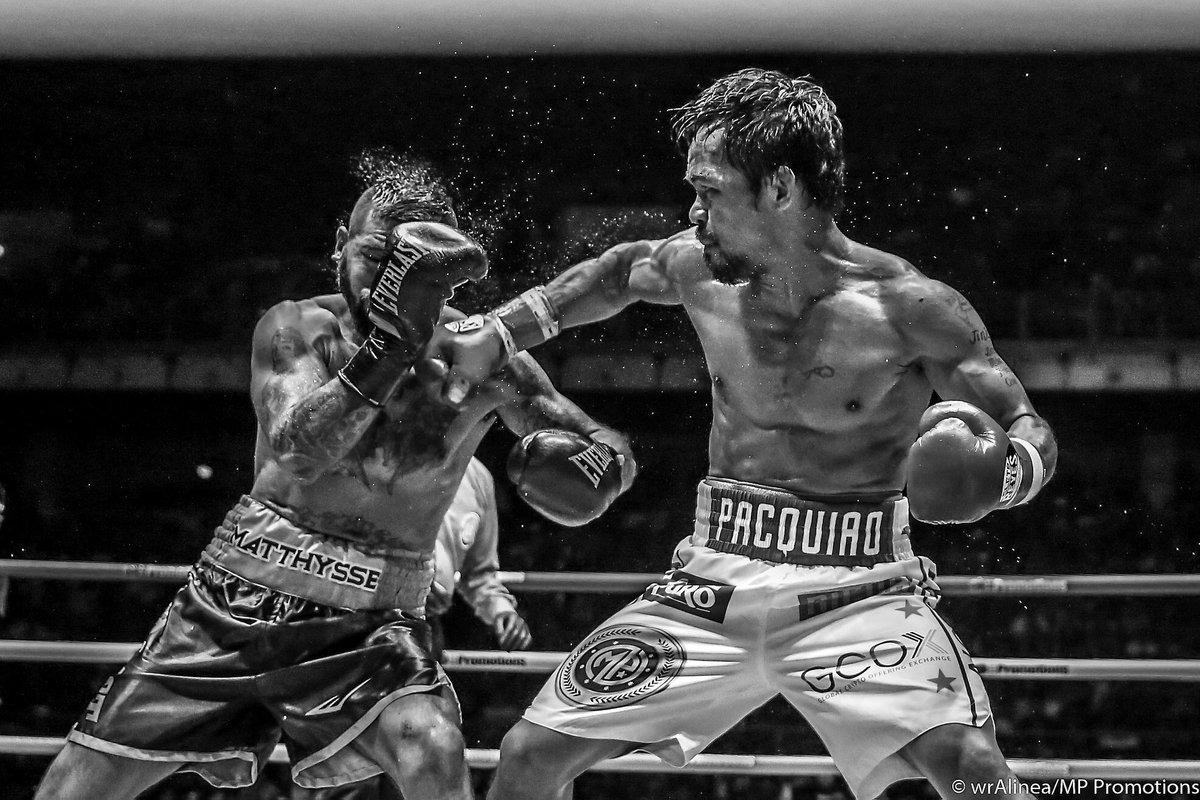
Manny Pacquiao isn’t quite ready to retire, and more big-money fights against high-level competition seem to be on the 39-year-old’s way.
“I feel like I’m a 27-year-old,” Pacquiao told GMAnetwork.com’s Jamil Santos last week. “Expect more fights to come.”
Pacquiao (60-7-2, 39 KOs) looked exceptionally sharp in his seventh-round knockout win over former junior welterweight titleholder Lucas Matthysse on July 15 at Axiata Arena in Kuala Lumpur, Malaysia. It was Pacquiao’s best performance in at least four years, netting Pacquiao a secondary world title at welterweight along with a slew of renewed public interest in the boxing superstar’s career.
But what comes next for the only fighter in the history of boxing to capture world titles in eight different weight classes? TSS takes a detailed look at the potential opponents for one of the sport’s most celebrated stars.
Cream of the Crop
Pacquiao looked good enough against Matthysse to suggest he’d make a viable candidate to face either Terence Crawford or Vasyl Lomachenko next. Crawford is ranked No. 2 on the Transnational Boxing Rankings Board’s pound-for-pound list while Lomachenko slots at No. 1.
While Pacquiao is no longer under contract with longtime promoter Bob Arum at Top Rank, most industry insiders expect he will continue working with Arum’s team in some capacity so long as his career keeps moving forward. Pacquiao started his own promotional venture, MP Promotions, to co-promote the Matthysse bout with Oscar De La Hoya, but Top Rank was still involved in the fight which is why the bout ended up streaming on ESPN+.
Top Rank’s two hottest commodities at the present are Ring Magazine and WBA lightweight champ Lomachenko and welterweight titlist Crawford. Both are highly-regarded, multi-division world titleholders in the primes of their careers who are universally considered the top fighters in boxing.
Lomachenko and Crawford would each present a unique set of problems for Pacquiao stylistically. Of the two, Pacquiao probably matches up best with Lomachenko at this point in his career. Crawford (33-0, 24 KOs) is much larger and heavier than both Pacquiao and Lomachenko, and unless Pacquiao just really wants to test himself against someone incredibly dangerous, it’d probably be best for Team Pacquiao to avoid fighting Crawford at all costs. Crawford would be a heavy favorite against Pacquiao and most boxing insiders don’t believe this version of Pacquiao could compete with Crawford.
Lomachenko (11-1, 9 KOs) is naturally smaller than Pacquiao and has never fought above 135 pounds. If Pacquiao could lure Lomachenko to 140 pounds or above, he’d find himself in a winnable fight against a top-notch opponent. Lomachenko would probably be the slight favorite based on age alone but Pacquiao’s power and athleticism would give him a realistic chance to pull the upset.
Other Notable Possibilities
Former junior welterweight titleholder Amir Khan has long been angling for a bout against Pacquiao. Khan faces Samuel Vargas on Sept. 8 in another comeback bout against lower level competition. Khan (32-4, 20 KOs) bravely moved up to middleweight to fight Canelo Alvarez in 2016 but was knocked out in the sixth round. He left the sport for a spell but returned to boxing in February as a welterweight with a sensational first round knockout win over Phil Lo Greco. A win over Vargas puts Khan in good position to secure a bout with Pacquiao, and the fight is a reasonable move by both camps. Pacquiao would probably be the heavy favorite, but Khan’s speed and long reach give him a decent chance to pull the upset.
Former welterweight titleholder Jeff Horn won a controversial decision over Pacquiao last year in Australia. The bout grabbed huge ratings for ESPN and there have been many debates since it happened as to which fighter truly deserved the nod from the judges. Horn (18-1-1, 12 KOs) doesn’t possess elite level talent, but he’s huge compared to Pacquiao and fights with such ferocity that the two can’t help but make an aesthetically pleasing fight together. Pacquiao would be the heavy favorite to defeat Horn if the two fight again.
Pacquiao vs. PBC fighters?
Boxing’s current political climate and the ongoing battle of promoters and television networks for the hearts and minds of boxing fans usually leaves many compelling fights between top level stars off the table. Fighters promoted by Top Rank and Golden Boy are almost never able to secure bouts with fighters signed to Al Haymon to appear under the Premier Boxing Champions banner and vice versa. But Pacquiao’s free agent status opens up new and interesting possibilities for the fighter to pursue noteworthy PBC fighters.
There had been lots of chatter about Pacquiao facing Mikey Garcia next. Garcia (39-0, 30 KOs) has been decimating competition at both lightweight and junior welterweight. Garcia is considered by most experts to be one of the top 10 pound-for-pound fighters in the sport. He’s the TBRB junior welterweight champion and a unified lightweight titleholder (WBC, IBF). While Garcia is hoping to land a big money bout against IBF welterweight titleholder Errol Spence, most boxing experts believe the jump up to 147 pounds would be too much for the diminutive Garcia who began his career at featherweight. A better welterweight target for Garcia would be Pacquiao who also began his career in a much lower weight class.
Spence (24-0, 21 KOs) is probably the best of the PBC welterweights. He’s considered by many to be on par with Crawford at 147 so it would be an incredibly dangerous bout for Pacquiao to go after at this point in his career. But Spence is aggressive and fights in a style that Pacquiao traditionally matches up very well against. Spence would be the favorite based on size, age and skill.
Slightly less dangerous to Pacquiao would be facing the winner of the Sept. 8 battle between Danny Garcia and Shawn Porter. Garcia (34-1, 20 KOs) and Porter (28-2-1, 17 KOs) are fighting for the vacant WBC welterweight title and the possibility of capturing another world title in his career could sway Pacquiao to seek out the winner. Pacquiao could find himself a slight favorite or underdog depending on which of the two fighters he would face, but both would be winnable fights.
The WBA welterweight champion is Keith Thurman. Thurman (28-0, 22 KOs) is a good boxer with tremendous power but Pacquiao’s speed and athleticism would probably give him the leg up in that potential matchup. Thurman hasn’t fought in over 16 months though and recent pictures suggest he’s not in fighting shape at the moment, so the likelihood of a Pacquiao vs. Thurman fight is pretty much nil.
Some fans want Pacquiao to face Adrien Broner. Broner (33-3-1, 24 KOs) is a solid contender at 147 but probably doesn’t have the skill to seriously compete with Pacquiao. Pacquiao would be a significant favorite and would likely stop Broner if the two were able to meet in a boxing ring.
Mayweather-Pacquiao 2?
Pacquiao lost a unanimous decision to Floyd Mayweather Jr. in 2015, but the circumstances surrounding the fight, and the fact it was the biggest box office bash in the history of the sport, have led many to suspect the two fighters would meet again in a rematch.
Yes, Mayweather (50-0, 27 KOs) is retired, but he’s unretired several times in his career for big money fights including last year’s crossover megafight with UFC star Conor McGregor. While it seems unlikely to happen, Mayweather-Pacquiao 2 would still be a huge worldwide event worth millions of dollars to both fighters so those following the sport can never say never to the idea of it happening again.
While Mayweather is 41, he’d still get the nod as the betting favorite should he fight Pacquiao again based on what happened in the first fight as well as his stylistic advantage over Pacquiao.
Pacquiao vs. McGregor?
McGregor’s bout against Mayweather last year was such a financial success and the MMA star made so much more money in the boxing ring than he did as a UFC fighter that the idea of him returning to the sport to face Pacquiao isn’t as far-fetched as one might think.
Pacquiao vs. McGregor would be an easy sell to the general public. According to CompuBox, McGregor landed more punches against Mayweather than did Pacquiao, and the general consensus is that Mayweather-McGregor was more fun to watch than Mayweather-Pacquiao.
The size difference between the two would lead to an easy promotion. McGregor is a junior middleweight and Pacquiao has only competed at the weight once back in 2010. Despite all that, Pacquiao would be a significant favorite to defeat McGregor and rightly so. He’s too fast and too good a boxer, and his aggressive style would likely lead to a stoppage win.
Pacquiao’s Top Targets
Pacquiao’s top targets should be Mayweather, McGregor and Lomachenko. Pacquiao would stand to make the most money facing either Mayweather or McGregor. Pacquiao’s reportedly injured shoulder heading into 2015 bout left many wondering how the fight might be different had the Filipino gone into things at his best, and Mayweather’s age might play more of a factor in the second fight than it did in the first. A Pacquiao-McGregor fight would be a worldwide spectacle, one Pacquiao would be heavily favored to win. Besides, it’d be interesting to see if Pacquiao could stop McGregor sooner than historical rival Mayweather. Finally, Lomachenko might be trying to climb up weight classes too fast, and Pacquiao would certainly be fit to test the validity of that theory. It’d be one of the biggest fights in boxing and a win for Pacquiao would be another huge feather in the cap of one of boxing’s true historically great champions.
Check out more boxing news on video at The Boxing Channel
-
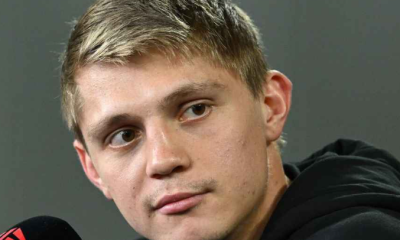
 Featured Articles4 weeks ago
Featured Articles4 weeks agoAustralia’s Nikita Tszyu Stands Poised to Escape the Long Shadow of His Brother
-
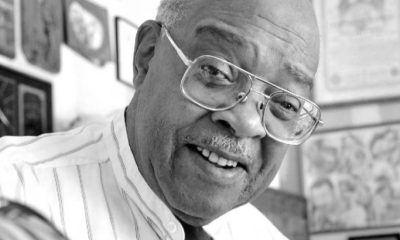
 Featured Articles4 weeks ago
Featured Articles4 weeks agoR.I.P. IBF founder Bob Lee who was Banished from Boxing by the FBI
-
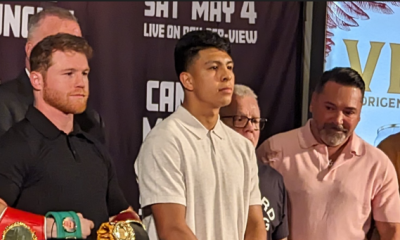
 Featured Articles4 weeks ago
Featured Articles4 weeks agoAvila Perspective, Chap. 277: Canelo and Munguia and More Boxing News
-
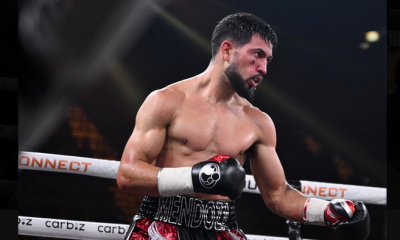
 Featured Articles4 weeks ago
Featured Articles4 weeks agoA Closer Look at Brian Mendoza who Aims to Steal the Show on the Tszyu-Fundora Card
-
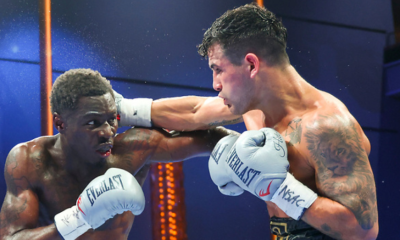
 Featured Articles2 weeks ago
Featured Articles2 weeks agoHitchins Controversially Upends Lemos on a Matchroom Card at the Fontainebleau
-
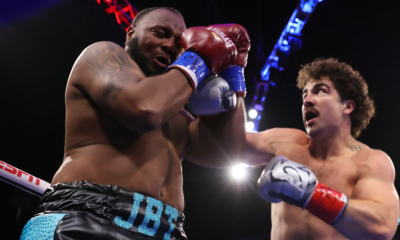
 Featured Articles3 weeks ago
Featured Articles3 weeks agoUndercard Results from Arizona where Richard Torrez Jr Scored Another Fast KO
-
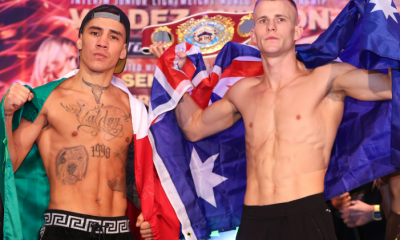
 Featured Articles3 weeks ago
Featured Articles3 weeks agoAvila Perspective, Chap. 278: Clashes of Spring in Phoenix, Las Vegas, and LA
-
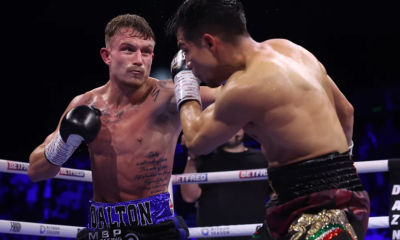
 Featured Articles4 weeks ago
Featured Articles4 weeks agoDalton Smith KOs Jose Zepeda and Sandy Ryan Stops Terri Harper in England

